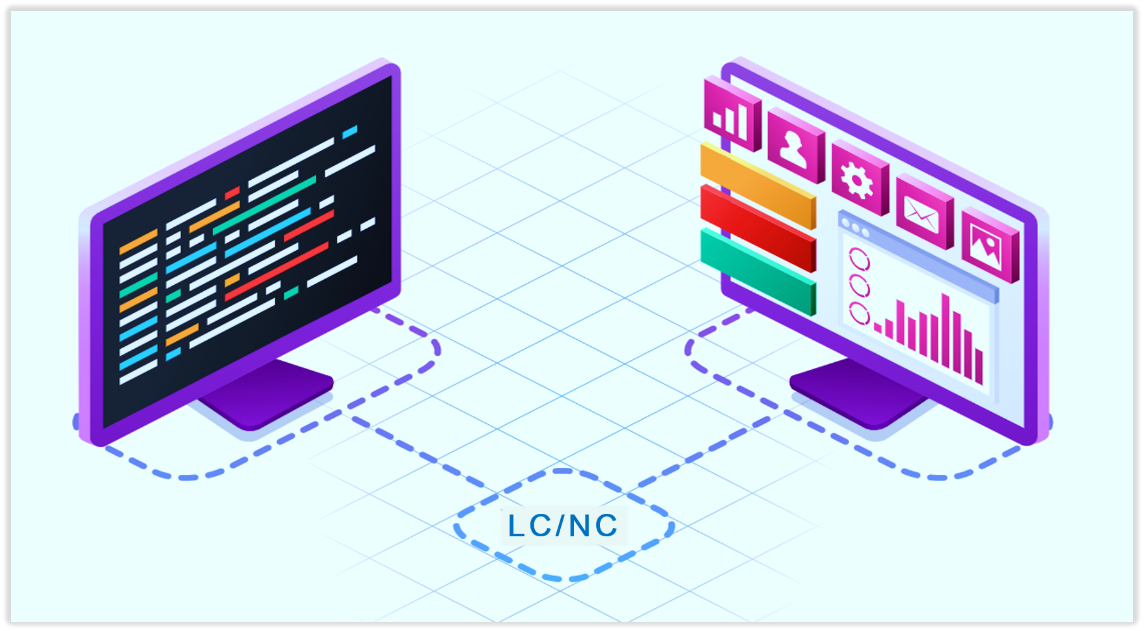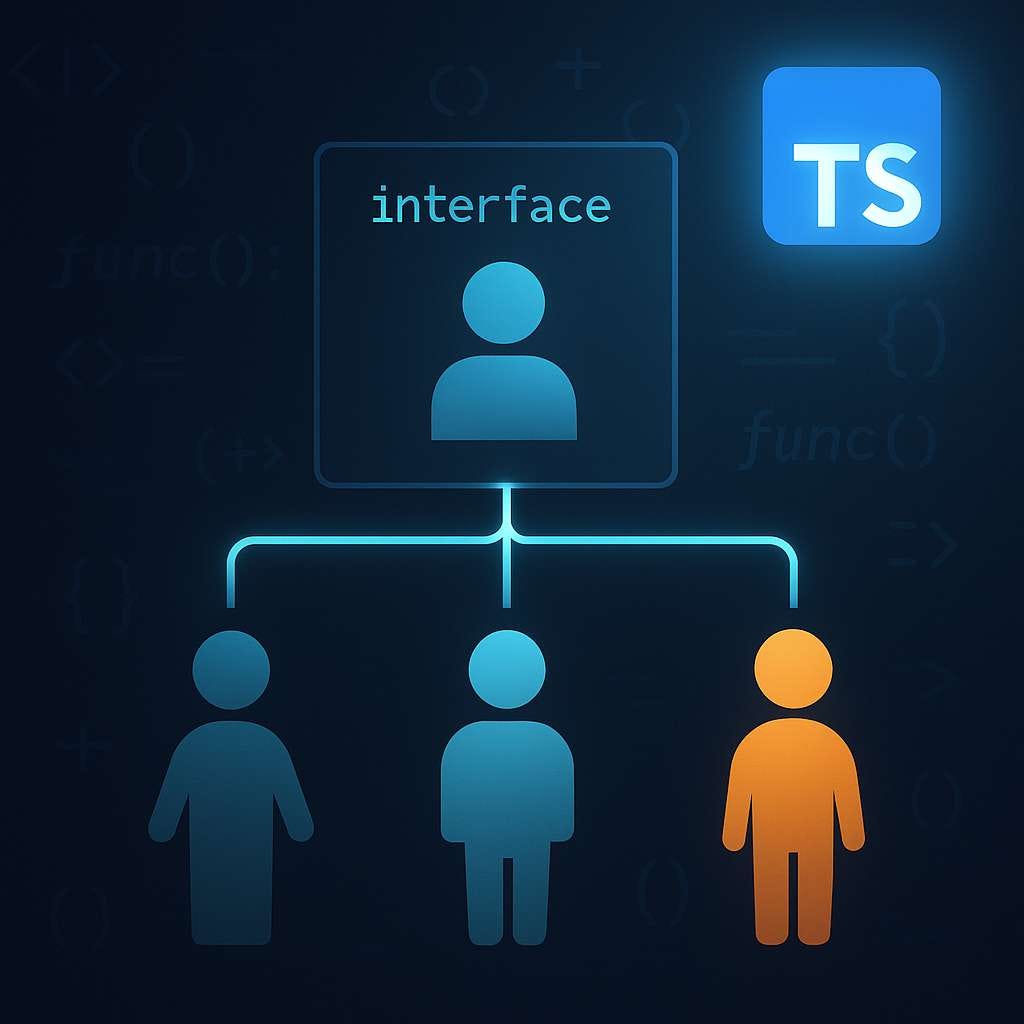Programming News
Hackernoon
105

Image Credit: Hackernoon
Frontend Burnout Is Real — And This New Paradigm Might Be the Cure
- Frontend burnout is a real issue faced by developers dealing with complex codebases and constant framework changes.
- A shift towards a new paradigm called Model Context Protocol (MCP) and MCP servers has shown promise in alleviating frontend fatigue.
- MCP servers act as bridges connecting AI models to external data sources, tools, and services, streamlining integration and interaction complexities.
- Benefits of MCP servers include reduced development overhead, dynamic user experiences, focus on core logic, enhanced scalability, and new possibilities for AI-powered applications.
- By empowering AI to handle interactions and logic through MCP servers, developers can focus on backend innovation and core product development.
- An example illustrates how an MCP-powered weather application can provide real-time weather information based on natural language queries without a traditional frontend.
- Embracing MCP servers represents a transformative shift in development, enabling the creation of intelligent, dynamic, and scalable applications.
- By adopting this approach, developers can increase productivity, eliminate frontend battles, and embrace a future of lean, intelligent app development.
- The article encourages developers to consider transitioning from traditional frontends to AI-driven interactions using MCP servers for enhanced efficiency and innovation.
- Overall, the MCP-driven architecture promises a future of building powerful, intuitive, and productive applications by leveraging AI in application development.
- The shift towards MCP servers has significantly impacted the author's productivity and development approach, offering a lean and intelligent future for app development.
Read Full Article
6 Likes
Medium
306

Image Credit: Medium
The Nuts and Bolts of Stars and Bars
- Combinatorics deals with counting, arranging, and partitioning objects in mathematics.
- It is a crucial aspect in various fields like computer science, encryption, physics, and operations research.
- The author became interested in combinatorics while researching for an encryption patent in 1998.
- Permutations and combinations are fundamental concepts in combinatorics.
- These concepts help in developing a powerful method for counting.
Read Full Article
18 Likes
Medium
232

Image Credit: Medium
RAG in Practice: Exploring Versioning, Observability, and Evaluation in Production Systems
- The article discusses the concept of RAG systems and their evolution alongside LLM-powered applications.
- It explores the practical implications of LLMOps, essentially MLOps tailored for large language models, with a focus on RAG systems.
- Key questions addressed include data tracking in RAG systems, evaluation of retrieval quality, and system architecture choices.
- The article highlights the importance of observability, evaluation/testing, reproducibility, modularity, and versioning in RAG systems.
- The author details building a containerized RAG system orchestrated with Docker Compose and utilizing a microservice architecture.
- Challenges in data versioning, traceability, and system evaluation are discussed within the context of RAG systems.
- The exploration includes incorporating monitoring with Prometheus and Grafana, and discussing evaluation methodologies using tools like RAGAS and MLflow.
- The article delves into model deployment considerations, system design choices, and the implications of using hosted LLMs versus self-hosted models.
- Future considerations involve event-driven architectures, enhanced evaluation infrastructure, user feedback mechanisms, and database optimization for RAG systems.
- The author emphasizes the ongoing evolution and learning process in working with RAG systems, seeking feedback and further insights.
- The project serves as a practical exploration of deploying RAG systems, aiming to grasp the nuances of achieving 'production-ready' status in this domain.
Read Full Article
13 Likes
PlanetPython
201

Python Insider: Python 3.13.5 is now available!
- Python 3.13.5 is now available as the fifth maintenance release of Python 3.13.
- This release addresses significant issues that were present in the previous version, 3.13.4.
- Some of the issues fixed include problems building extension modules on Windows and errors with generator expressions and int-like objects.
- The release includes various bug fixes that were expedited to resolve issues promptly.
- Upgrading to Python 3.13.5 is highly recommended for all users of Python 3.13.
- The Python Development team encourages users to stay safe and upgrade to the latest release.
- Volunteers play a crucial role in Python Development, and support from the community is appreciated.
Read Full Article
12 Likes
Discover more
- Software News
- Web Design
- Devops News
- Open Source News
- Databases
- Cloud News
- Product Management News
- Operating Systems News
- Agile Methodology News
- Computer Engineering
- Startup News
- Cryptocurrency News
- Technology News
- Blockchain News
- Data Science News
- AR News
- Apple News
- Cyber Security News
- Leadership News
- Gaming News
- Automobiles News
Medium
264

Image Credit: Medium
I’m Sharing the Exact 8-Step Playbook I’d Use to Get Rich with AI Today
- AI is a rapidly evolving technology that presents numerous opportunities for those who explore it.
- AI is likened to a new continent full of potential for wealth creation, similar to the early days of the internet.
- The key to getting rich with AI is not luck but intelligence in leveraging the technology to address actual problems.
- The provided playbook offers a step-by-step guide on utilizing AI to create valuable solutions.
Read Full Article
13 Likes
Medium
302

Image Credit: Medium
Low-Code vs Traditional Development
- Low-code platforms are gaining traction among actual engineers, not just non-tech individuals, due to their speed, customizability, and power.
- These platforms, enhanced with AI capabilities, aim to expedite mundane tasks, allowing engineers to concentrate on critical aspects like logic and product refinement.
- Increasingly, solo developers are constructing complete SaaS applications within a weekend, while internal teams are streamlining lengthy processes into quick tasks using tools like Bubble + GPT.
- Non-developer tools are evolving into developer tools, emphasizing that low-code platforms don't render engineers redundant but enable them to focus on intricate tasks like product strategy and architecture.
- The future's focus won't solely revolve around the ability to write code but on effectively leveraging tools to expedite prototypes and fortify them for production.
- Engineers who combine coding expertise with the capability to utilize these platforms proficiently are poised to be highly valuable in the shifting landscape of software development.
Read Full Article
18 Likes
Medium
319

Image Credit: Medium
Polymorphism in TypeScript: A Deep Dive for Real-World Development
- Polymorphism in TypeScript allows for managing various behaviors through a common interface.
- It enables scalability by adding new classes that adhere to a contract without breaking the existing system.
- Polymorphism keeps systems flexible, allowing dynamic switching of loggers at runtime.
- TypeScript's structural typing and polymorphism enable functions to be adaptable while maintaining type integrity.
- Polymorphism at the type level facilitates clean and scalable architecture.
- Using polymorphism with TypeScript's type narrowing features ensures safe runtime behavior.
- Roles in applications, like Driver, Passenger, Admin, can leverage polymorphism by sharing a common interface or abstract class.
- Applying polymorphism eliminates duplicated logic, keeping code DRY and future-proof.
- Overengineering in polymorphism, creating unnecessary layers, should be avoided.
- Start with concrete implementations and introduce polymorphism when similar patterns emerge across the codebase.
- Consider interface-based designs for better scalability when adding more behaviors.
- Composing behavior with small modules is preferred over deep class hierarchies to make code easier to test and extend.
- The ecosystem is adopting tools like Zod and io-ts for runtime validation in TypeScript types, enhancing polymorphic APIs.
- Mastering polymorphism in TypeScript provides a significant edge in developing applications.
- This article provides insights into leveraging polymorphism for real-world development in TypeScript.
Read Full Article
19 Likes
Dev
311

Image Credit: Dev
Diving into Next.js - My 2-Week Learning Experience
- The author shares their two-week learning experience with Next.js during an internship.
- Next.js is a framework built on top of React by Vercel, offering file-based routing, SEO support, CSS features, and more.
- Key features of Next.js include automatic module installation for Tailwind CSS, font and image optimization, and file-system routing.
- Next.js enhances font retrieval and automates image optimization for different screen dimensions.
- File-system routing in Next.js simplifies code tracing, optimizing link navigation for faster page loading.
- Next.js simplifies API and database connectivity, utilizing React Server Components for direct database queries.
- Loading.tsx in Next.js allows displaying UI while data is fetched, enhancing user experience with loading skeletons.
- Next.js offers client hooks like useSearchParams() and error handling using try-catch blocks and form validation.
- Server-side validation is crucial to prevent malicious data entry, and NextAuth.js simplifies authentication and authorization.
Read Full Article
18 Likes
Dev
56

Image Credit: Dev
The Best Free ChatGPT Alternatives for Coding (Tested and Compared) 😲
- Developers seeking free alternatives to ChatGPT's paid features have tested and compared various AI coding assistants.
- The article provides a hands-on comparison of 7 free AI coding tools, analyzing their code quality, reasoning ability, IDE support, and more.
- Tools like Claude.ai, Gemini, Codeium, Phind, Cursor, HuggingChat, and OpenRouter are reviewed, detailing their strengths and weaknesses.
- Recommendations are made based on specific use cases, such as debugging, autocomplete, error solving, and project-wide edits.
- A comparison table highlights key features of each tool, including GPT-4 quality, IDE support, prompt memory, and best use cases.
- The article suggests Claude.ai as the best overall tool, Codeium for in-editor use, Phind for problem-solving, and Cursor for project-aware editing.
- Users are encouraged to combine tools like Claude, Codeium, and Phind based on their development workflows for optimal results.
- Readers are invited to share their experiences with these tools or recommend other alternatives for developers in the comments section.
Read Full Article
3 Likes
Edsurge
30

Image Credit: Edsurge
Coding, Creativity and the New Digital Fluency
- Coding, creativity, and digital fluency are essential aspects of modern education.
- Students need to move beyond basic coding skills to systemic thinking, creativity, and intentional design.
- The integration of creative coding in computer science education is crucial for fostering invention and expression.
- Creativity is vital in the evolving job market where adaptable and creative thinkers are sought after.
- Declining levels of creativity in students underlie the importance of incorporating creative elements in education.
- Creative coding encourages self-expression, innovation, and computational thinking.
- Programs like Minecraft Education offer a platform for creative coding through game design and storytelling.
- Creative coding enhances critical thinking, problem-solving, and storytelling skills in students.
- AI-driven tools are reshaping programming proficiency, emphasizing skills fostered by creative coding.
- Professional development opportunities support educators in implementing creative coding approaches successfully.
Read Full Article
1 Like
Medium
78

Image Credit: Medium
JavaScript in 2025: The Quirks That Keep It Weird
- JavaScript is considered weird by many developers, especially beginners, due to its unique features and behaviors.
- ECMAScript Language Specification type-coerces boolean values into their numeric counterparts.
- Comparing floating-point values should be done with tolerance to avoid issues.
- Arrays being truthy leads to interesting outcomes with operators.
- The parseInt function behaves unexpectedly with certain inputs.
- Empty strings are converted to 0 in JavaScript.
- The behavior of null and undefined in JavaScript operations is explained.
- NaN is described as a 'Not-a-Number' value in JavaScript but has some peculiarities.
- JavaScript has some odd issues surrounding NaN, affecting comparisons.
- The isNaN function is recommended for checking if a value is NaN.
- JavaScript's quirks and odd syntaxes may confuse but advancements like TypeScript have helped.
Read Full Article
4 Likes
Medium
407

Image Credit: Medium
❌ ✈️ How to cancel Javascript API request with AbortController
- The fetch API in JavaScript allows making HTTP requests, working with promises for request completion.
- For real-time suggestions in a search bar, fetch requests are made as the user types.
- Repeated fetch requests can be inefficient when multiple requests are made for each typed character.
- Using a debounce function delays fetch requests until the user stops typing.
- Even with debounce, there can be issues if the user types quickly after the delay.
- AbortController in modern browsers allows canceling requests before completion.
- An example is shown with an input field to search for posts, canceling previous requests if new ones are made.
- AbortController helps improve performance by canceling ongoing requests to prevent unnecessary API calls.
Read Full Article
24 Likes
Dev
96

Image Credit: Dev
Vibe Coding: A New Paradigm in Software Development
- Vibe coding is a new approach in software development emerging in 2025, focusing on building software through intent with the assistance of AI.
- Vibe coding involves describing the desired outcome, letting AI suggest solutions, and collaborating to refine the code until it feels right.
- It transcends traditional syntax-based coding, emphasizing a vision-first approach where code acts as a creative medium, not just a static result.
- Key aspects of vibe coding include spending more time in feedback loops, conversing with code, leveraging AI for faster understanding of intentions, and fostering collaborative and experimental work.
- This shift signifies a move from merely writing code to directing it, enhancing creativity and speed without replacing developer skills.
Read Full Article
5 Likes
Javacodegeeks
214

Image Credit: Javacodegeeks
Feature Toggles in Spring Boot: Unleash Progressive Delivery
- Feature toggles are crucial for progressive delivery, A/B testing, and safe deployments in Spring Boot.
- Developers utilize feature toggles for testing in production, gradual feature rollouts, and user-based access control.
- Two prominent tools for Java/Spring Boot developers are Unleash and FF4J.
- Unleash offers a client-server model for managing feature flags and strategies through a centralized dashboard.
- Usage of Unleash in Spring Boot involves setting up the server, adding dependencies, and configuring application properties.
- FF4J is an embedded library that integrates easily with Spring Boot, providing a web dashboard and support for role-based toggles.
- Best practices for feature toggle management include clear naming, temporary toggles, testing both states, avoiding logic creep, and using observability tools.
- Unleash is suitable for distributed systems needing real-time feature control, while FF4J is ideal for simpler setups and tight Spring integration.
- Developers laud Unleash for decoupling feature rollout from deployment and FF4J for minimal dependencies and direct control inside the app.
- Feature toggles enable decoupling code deploys from feature releases, promoting safer experimentation and faster releases.
- Consider combining tools like Unleash and FF4J for large systems to leverage external and internal rollout capabilities.
Read Full Article
12 Likes
Dev
56

Image Credit: Dev
From Getting Started to Performance Optimization.
- A computer science junior shared their experience with the high-performance Rust HTTP framework, Hyperlane, during a Web service project.
- Hyperlane's clean ctx abstraction simplifies code readability by reducing nested method calls and improving the handling of complex business logic.
- The framework's flexible method macros streamline route definitions for RESTful APIs, allowing developers to focus on business logic rather than HTTP intricacies.
- Response handling in Hyperlane is intuitive and powerful, enabling setting response status, headers, and sending responses in chunks for efficient large file handling.
- Hyperlane's middleware architecture, following the onion model, separates concerns like authentication from business logic, enhancing extensibility and code organization.
- The combination of static and dynamic routing in Hyperlane simplifies routing setup and parameter retrieval, essential for projects like blog systems.
- Hyperlane's impressive performance optimization results, with a high Queries Per Second (QPS) score, rank it second only to the native Tokio implementation among tested frameworks.
- Key takeaways from learning and using Hyperlane include clean API design, the powerful middleware model, the safety of Rust's type system, and the importance of asynchronous programming for high-performance services.
- Future plans involve exploring Hyperlane's WebSocket support, delving into its utilization of Rust's zero-cost abstractions, and building a microservices architecture based on the framework.
- The experience with Hyperlane has reshaped the programmer's perspective on programming, emphasizing the harmony between performance and development experience that Rust exemplifies.
Read Full Article
3 Likes
For uninterrupted reading, download the app